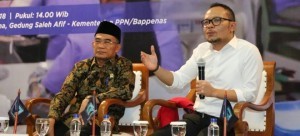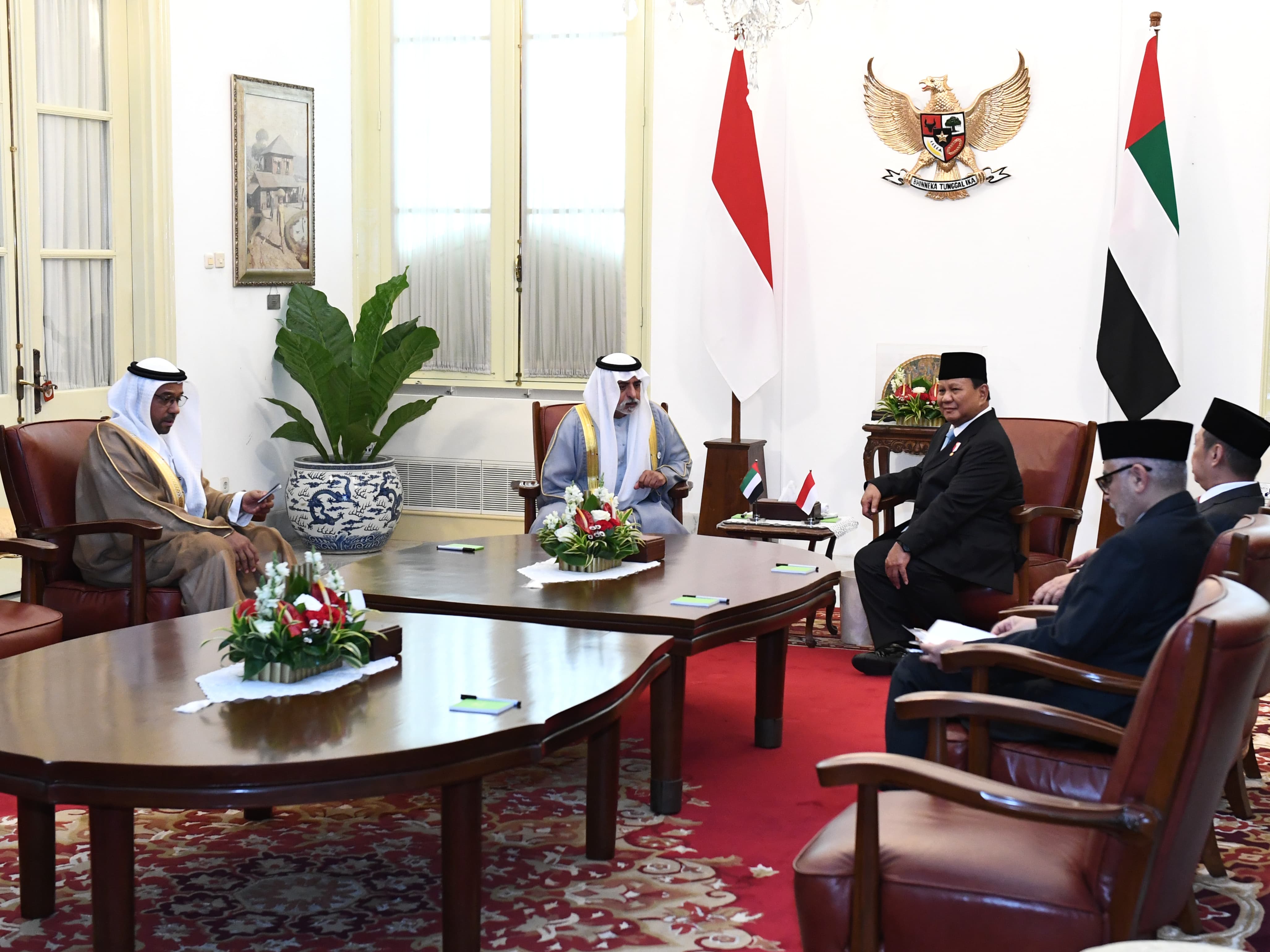Open Unemployment Falls to 5.34 Percent

Minister of Manpower Hanif Dhakiri and Minister of Education and Culture Muhadjir Effendy at the Merdeka Barat 9 Forum (FMB9) press conference adopting a theme Unemployment Reduction in Jakarta, Thursday (8/11). (Photo by: Ministry of Manpowers Public Relations)
The Central Statistics Agency (BPS) has reported that Indonesias level of open unemployment over the past four years continues to decline. The unemployment rate in 2018 is the lowest figure during President Joko Jokowi Widodo and Vice President Jusuf Kalla administration, Minister of Manpower Hanif Dhakiri said.
In a press release on Monday (3/11), the BPS recorded that in 2015, the open unemployment rate was 6.18 percent and declined on the following year to 5.61 percent, and in 2017 it declined further to 5.50 percent. As far as August 2018, the open unemployment rate fell to 5.34 percent.
We must appreciate the Governments achievements in reducing the unemployment rate, Hanif said at the Merdeka Barat 9 Forum (FMB9) press conference adopting a theme Unemployment Reduction in Jakarta, Thursday (8/11).
Although it has shown a positive tendency, Hanif ensures that the expansion of job opportunities must be continued in urban and rural areas, since the growth of manufacturing, tourism, food and beverage industries also contributes to the absorption of employment.
The level of open unemployment trend from all education bases is declining. This is positive, Hanif said, adding that he wants to see optimistic side of the people.
Based on education level, the Minister said that vocational high school graduates always become the highest contributor to the level of open unemployment. However, since 2015, the trend tends to decline. In 2015, the rate was 12.65 percent and then in 2016 it declined to 11.11 percent, 11.41 percent in 2017, and 11.24 percent in August 2018.
According to Hanif, human resources problems do not only occur in vocational high school graduates workforce. Based on general employment profile in 2018, 58 percent of 131 million workforces are elementary/junior high school graduates. However, Hanif asserted that his ministry has made breakthroughs by improving the access of education and improving the quality of formal education, especially elementary and secondary educations.
Furthermore, the Minister will also improve vocational trainings access and quality massively. The massification step is needed to overcome three labor problems, namely quality, quantity and distribution of labor. That’s the key to the future; access and quality must be improved, he said.
The Government, Hanif continued, is implementing policies to strengthen apprenticeship and vocational training, one of which is the triple skilling policy (skilling, upskilling and re-skilling). For unskilled workers, they can take a skilling program in order to have expertise in certain fields.
For workers who have skills and want to improve themselves, they can enter the upskilling program. Meanwhile, those who want to switch skills can enter the reskilling program.
In the meantime, Minister of National Development Planning/Head of the National Development Planning Agency Bambang Brodjonegoro added that the number of Indonesian employment in 2018 has exceeded the target of the 2018 Government Work Plan (RKP) and the 2015-2019 National Medium Term Development Plan (RPJMN). It increases 2.99 million compared to 2017.
From 2015 to 2018, the Government has succeeded in creating 9.38 million jobs. Unemployment rate also falls by 40 thousand people, so the level of open unemployment has been successfully reduced to 5.34 percent this year.
The decline can be achieved by creating job opportunities of 2.6-2.9 million people and formal employment in high-value sectors can absorb workforces with high school or college/university diplomas, Bambang said.
On the occasion, Minister of Education and Culture Muhajir Effendy said that he will draw up a plan to adjust vocational school graduates to meet industrial sector needs. The vocational school curriculum will be industrial-based with composition 40 percent studying in school and the rest 60 percent from working as an apprentice in industry, he said. (Biro Humas Kemnaker/ES)








